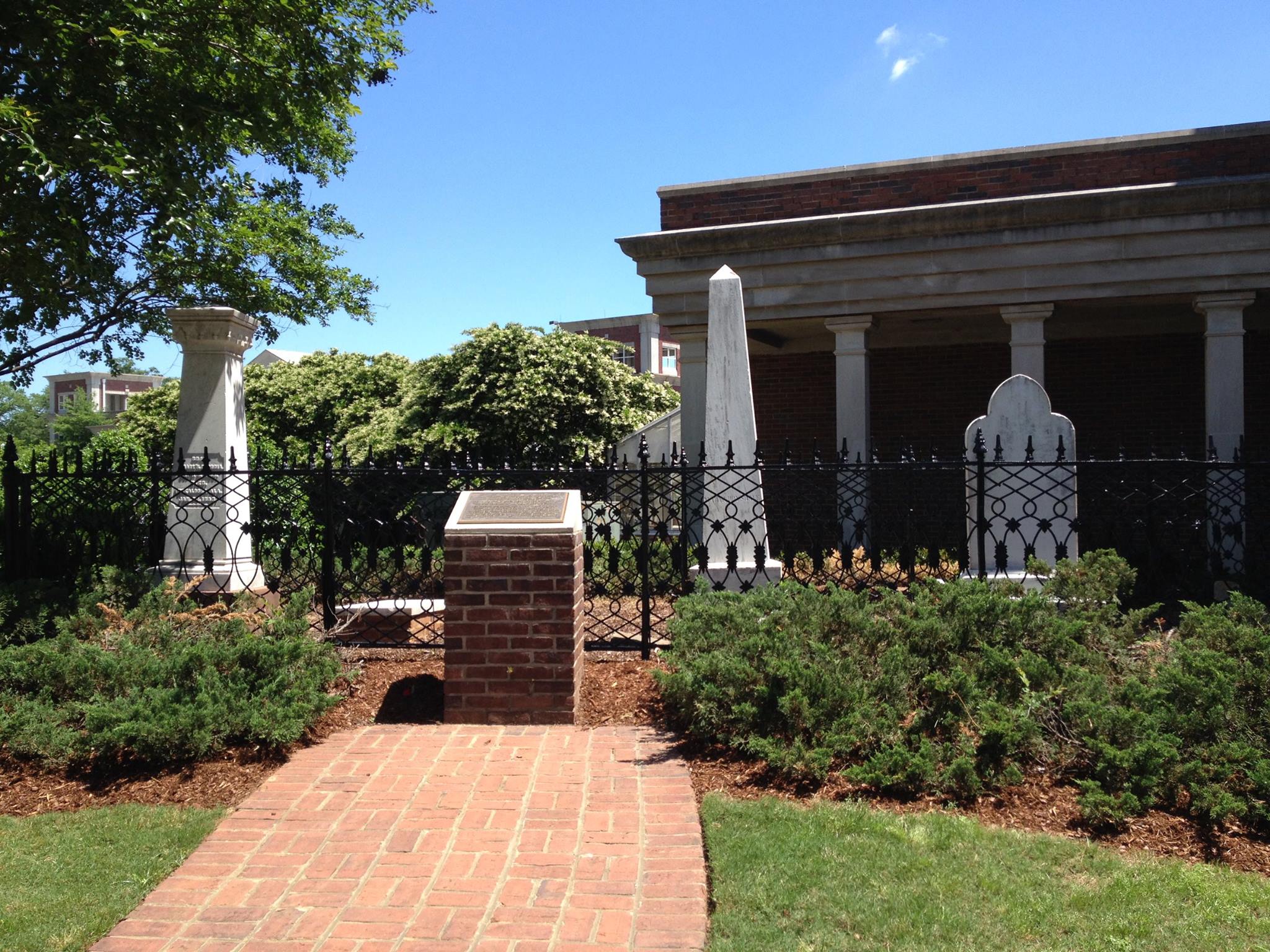
During the 1840s the university was still finding its foothold in the academic world. Under Manly, the college’s second president, Alabama was rapidly gaining a reputation for excellence. The institution was also undergoing some excruciating growing pains. While renowned faculty members such as F. A. P. Barnard and John Mallet focused on educating the minds of the young male students, Manly concentrated his efforts on subduing their exuberant (some would say lawless) behavior. The students’ reaction to Manly's efforts was to riot--three times in the 1840s.
The president was a North Carolina native with a doctor of divinity degree, and an ordained Baptist minister. While at the university he recorded what he considered the moral offenses of students and faculty in his diary.
In 2004, the UA Faculty Senate apologized for the predecessors' role in the institution of slavery and erected a monument at this gravesite to commemorate the contributions of slaves to the building of the university.
Today all that remains of the university’s cemetery is a small, rectangular plot enclosed by iron railings. Inside are the marked graves of the Pratt family. The fates of Rudolph, Brown, and Crawford remain a mystery--a mystery of particular interest to the staff of Alabama Heritage.
Alabama Heritage operated in a beautiful Victorian home, the Kilgore House (ca. 1880s), overlooking the Pratt cemetery plot until 2012. Early photographs of the house indicate that what was the spacious front yard of Kilgore House once might have been part of the acre designated as the university cemetery. The rest of the cemetery now probably lies under the Biology Building, constructed in 1971. Were the graves of the student and slaves inadvertently disinterred by its construction? The staff of Alabama Heritage prefers to believe that the three bodies rest in peace in the front lawn of the former Kilgore House.
In 2004, the missing cemetery occupants were honored in a ceremony sponsored by the University of Alabama. A plaque now rests beside the Pratt enclosure, describing the history of the university cemetery, and new landscaping has made what remains of the cemetery a spot of repose on the bustling campus.
This article was first published in Issue #80, Spring 2006.
Author
Pam Jones is a freelance writer in Birmingham with a particular interest in criminal cases from Alabama’s past.
 RSS Feed
RSS Feed